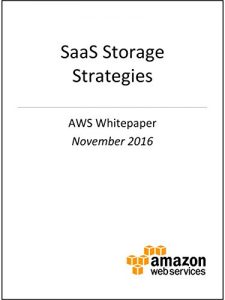November 2016
Multitenant storage represents one of the more challenging aspects of building and delivering software-as-a-service (SaaS) solutions. There are a variety of strategies that can be used to partition tenant data, each with a unique set of nuances that shape your approach to multitenancy. Adding to this complexity is the need to map each of these strategies to the different storage models offered by AWS, such as Amazon DynamoDB, Amazon Relational Database Service (Amazon RDS), and Amazon Redshift. Although there are high-level themes you can apply universally to these technologies, each storage model has its own approach to scoping, managing, and securing data in a multitenant environment. This paper offers SaaS developers insights into a range of data partitioning options, allowing them to determine which combination of strategies and storage technologies best align with the needs of their SaaS environment.
This documentation is offered for free here as a Kindle book, or you can read it in PDF format at https://aws.amazon.com/whitepapers/.
Multitenant storage represents one of the more challenging aspects of building and delivering software-as-a-service (SaaS) solutions. There are a variety of strategies that can be used to partition tenant data, each with a unique set of nuances that shape your approach to multitenancy. Adding to this complexity is the need to map each of these strategies to the different storage models offered by AWS, such as Amazon DynamoDB, Amazon Relational Database Service (Amazon RDS), and Amazon Redshift. Although there are high-level themes you can apply universally to these technologies, each storage model has its own approach to scoping, managing, and securing data in a multitenant environment. This paper offers SaaS developers insights into a range of data partitioning options, allowing them to determine which combination of strategies and storage technologies best align with the needs of their SaaS environment.
This documentation is offered for free here as a Kindle book, or you can read it in PDF format at https://aws.amazon.com/whitepapers/.






